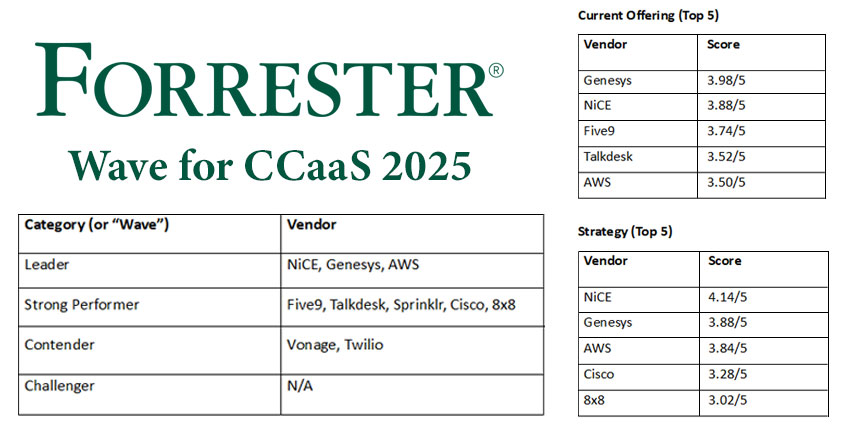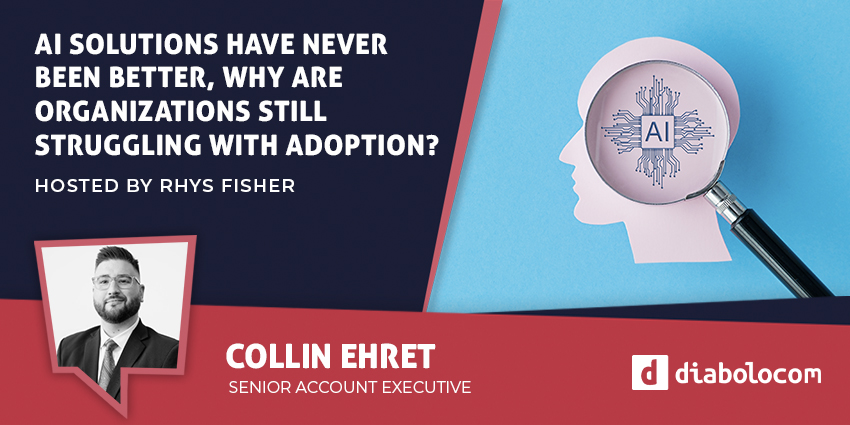Integrating UCaaS and CCaaS solutions is the latest hot trend to sweep across the CX space. In the last year alone, leading UC and contact centre vendor RingCentral has recorded a 500% growth in its Microsoft Teams integration. That’s because UCaaS is arguably the best calling option for Teams (learn more about that in this webinar next week).
Yet, many CCaaS vendors are also developing UCaaS capabilities of their own, and traditional UC players are establishing partnerships across the contact centre space.
So, what is the catalyst behind this emerging trend?
Of course, the need for enhanced communication in remote environments – necessitated by the pandemic – played its part. However, from a broader CX perspective, there are many more reasons why bundling these solutions is a significant win. Here are five excellent examples.
1. Foster Cross-Function Collaboration
When companies approach CX as a team sport, where different departments work together to break down journey siloes, it often functions best.
Typically, the intelligence behind this strategy stems from the contact centre. After all, it is the contact centre that captures feedback, disposition data, and many customer metrics. Through analysis, pain points come to the fore.
Sharing this knowledge across the UC platform, CX teams can foster collaboration between relevant departments, encouraging them to work together through a UCaaS-enabled community. As Louise Newbury-Smith, UK Country Manager at RingCentral, says:
“When everyone shares goals and collaborates to translate a mutual CX vision into values, processes, and behaviours, win-win outcomes for customers and companies are much more likely”
Yet, collaboration does more than smooth over CX frictions. Working together helps maximize the value of customer insights, inspire innovation, and ensure consistency.
2. Create a Unified View of CX
CCaaS solutions mine customer insights, with prominent providers offering reporting, analytics, and voice of the customer (VoC) tools. Meanwhile, UCaaS solutions provide dashboards to share insights across the organization. Combining these capabilities offers the potential for a unified view of CX.
Again, this transparency unleashes the potential for collaboration, driving customer-centricity across the enterprise. Yet, it also enables a single source of truth that paints a clear picture of performance for various departments, the CX team, and the c-suite.
Such a dashboard should display both real-time and historical metrics intrinsically linked with the company vision and strategy. If so, everyone works towards the same tangible goals and can celebrate successes together.
3. Engage in Knowledge Sharing
Knowledge management is no longer the process of storing information and passing it to agents to solve customer queries. Now, it has another layer: sharing knowledge content across the organization to inspire process improvement. Document sharing features within a UCaaS solution facilitate this strategy.
For instance, perhaps the contact centre knowledge base includes an article that supports agents dealing with a common complaint regarding a particular design flaw. Such content is helpful, but maybe it is better in the hands of product designers, who can address the issue in new models to ensure customer satisfaction.
Building on this example, Newbury-Smith says:
“With automated ticket tagging – made possible by speech analytics – contact centres can accurately quantify the costs that such problems generate. These statistics are often eye-watering and inspire action”
Going further, companies can extend this strategy to maximise knowledge stored across the entire enterprise, engaging suppliers and third-party support too.
4. Build Agent Support Channels
Consolidating UC in the contact centre can improve employee experiences. How? First and foremost by establishing support channels, which allow agents to connect with relevant subject matter experts (SMEs), who offer real-time guidance.
Thanks to the integration, agents can quickly see which SMEs are available and engage with them – without switching platforms – when struggling to answer a query. Doing so offers a vital line of agent support and streamlines the contact handling process.
In addition, the contact centre can establish other internal channels to share best practices that will enhance team performance and offer public recognition for excellent performance. These features help agents to feel part of a team.
Such capabilities are mission-critical in remote contact centres where a sense of camaraderie is tricky to build and agents do not enjoy the same levels of hands-on support.
5. Supplement AI Transformation
Particular prominent UCaaS vendors provide AI tools that supplement contact centre performance. Indeed, Zoom offers a conversational analytics solution, while Microsoft boasts a Cognitive Services suite, which includes agent-assist functionality.
Discussing the Microsoft offering in more detail, Newbury-Smith adds:
“Cognitive Services offers speech recognition, natural language understanding (NLU), natural language processing (NLP) and more capabilities that allow developers to innovate. With a CCaaS integration, they can build custom tools that differentiate the customer and agent experience”
Such an offering opens the door for innovation. For example, embedding image recognition – another feature of Microsoft Cognitive Services – within a chatbot may enable contact centres to automate more complex queries. As a result, customers enjoy faster, more convenient service.
How to Integrate a UCaaS Solution with the Contact Center
Typically, there are two methods. First is a “do it yourself” approach where developers create an environment in which calls, messages, emails, and videos pass through the UCaaS platform. Then, thanks to a private SIP connection, they reach the CCaaS solution, which identifies the customer and routes them through to an agent. From there, contact centres can enable call/screen recordings, reporting, analytics and more.
Within such a contact centre, agents will usually work from a side-by-side interface to access the capabilities of both solutions without switching platforms.
Alternatively, companies can implement a CCaaS solution with built-in UCaaS capabilities. Most often, this option offers a superior user experience. Nevertheless, other functions may prefer to connect through a more mainstream platform, such as Teams.
Whatever the preference, it is perhaps best for companies to discuss their needs with a vendor that offers both. RingCentral is one of the very few vendors that do precisely that.
If you’d like to learn more about how to get more out of Teams with UCaaS calling and other integrations that support CX then sign up to this webinar.
Or you’re more curious about bringing UCaaS and CCaaS solutions together, then reach out to the RingCentral team today.







